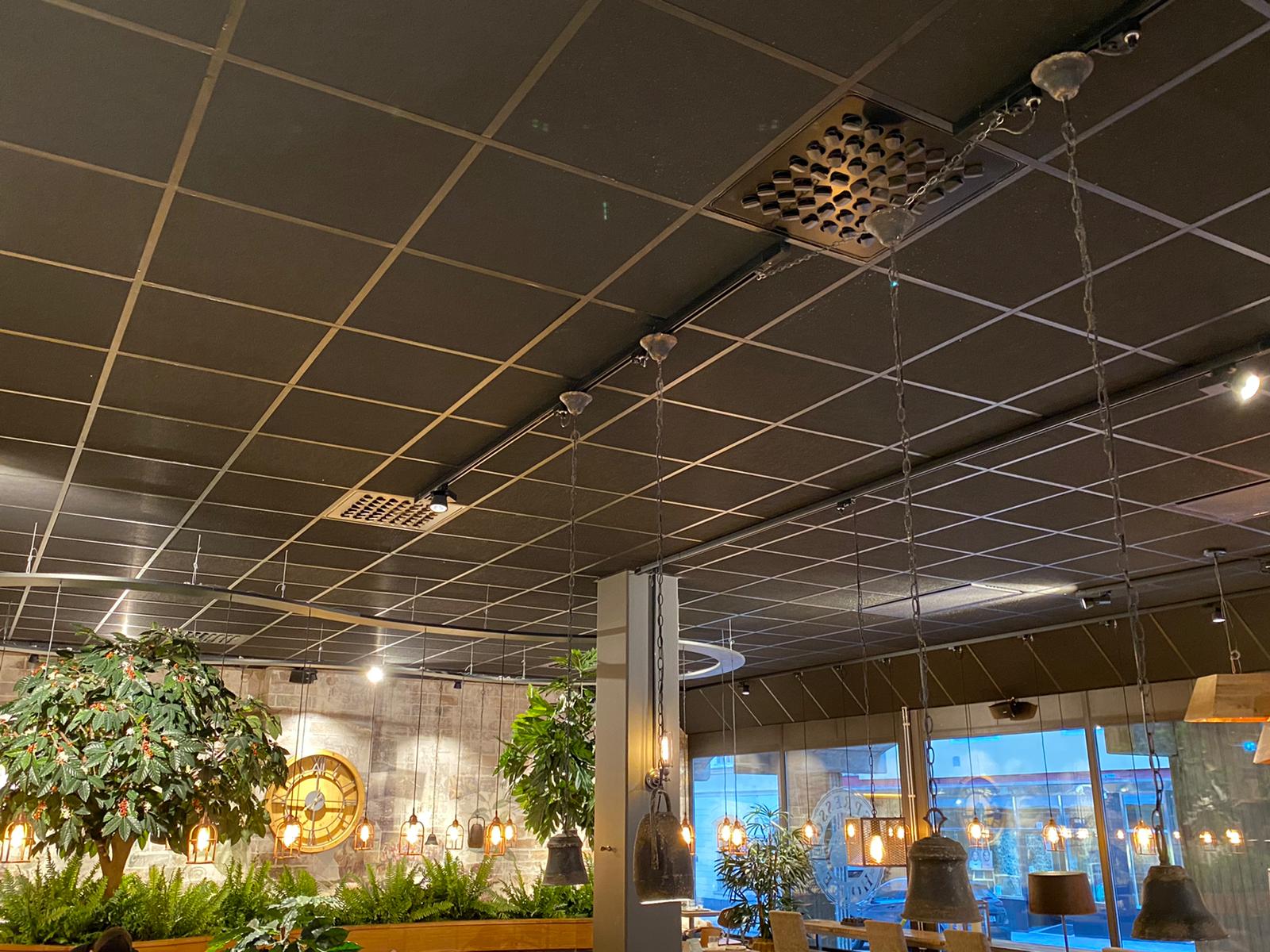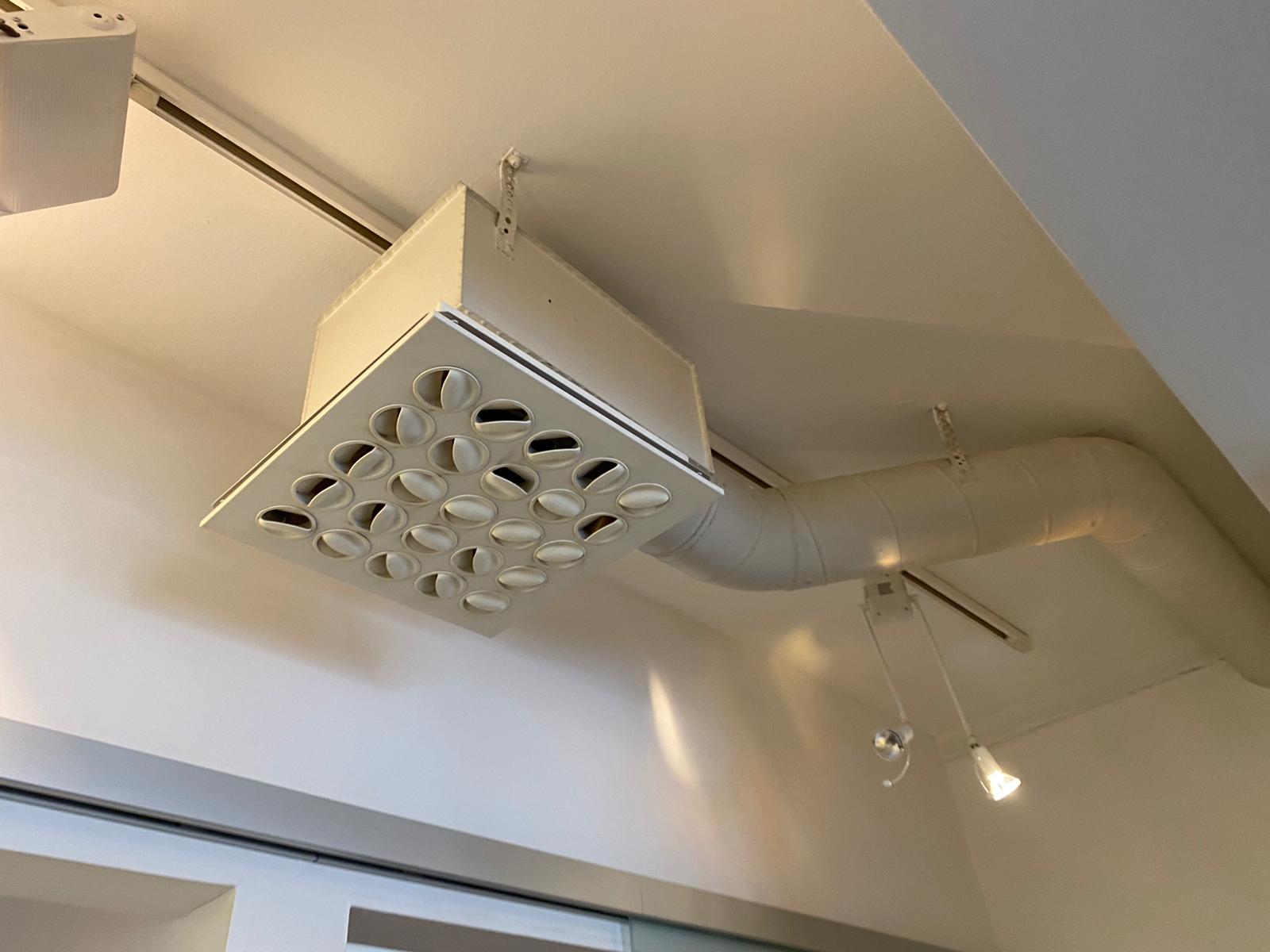
Maximising ventilation systems in buildings has been a hot topic for our sector due to the vital role ventilation plays in the spread of Covid-19. Looking beyond the coronavirus, Ventilation is critical in buildings as the filtered fresh air not only delivers aids in the well being of the occupants, but also reduces damp and stagnant air. Although air flow takes precedence when choosing how to ventilate your building, design can also play a key part. In this blog we expand on the design principle for the delivery of air into the office space and a principle known as the Coanda effect.
The Coanda Effect is named after Henri Coanda, a Romanian engineer who expanded on the ‘surface effect’. The surface effect is the result of when airflow is closely projected to a parallel surface, such as a ceiling or the walls of a duct system. When this occurs, airflow is affected by the parallel surface it is flowing with. In simpler terms, air clings to surfaces as it moves.
The Coanda Effect creates a change in pressure at the parallel surface, which allows airflow to cling to the ceiling or duct wall it is flowing with. As the airflow moves along the surface, its movement is extended along that surface and projected farther into a room or down a duct than it would if it were blowing into an open space.

The air moving with the surface needs a smooth, obstruction-free pathway to maintain the Coanda Effect. On a ceiling, items such as light fixtures or ceiling variations are obstructions and will interfere with the airflow being maintained. In a duct system, items such as scoop takeoffs, collars, and restrictive duct fittings are considered obstructions and also interfere with this action being maintained.
As the air travels further from the diffuser, the air velocity drops, gradually causing the air pattern to lose its “cling.” It then falls toward the floor. This results in good mixing of the cool or warm air from the diffuser with the room air. This also results in the room air being pulled up toward the center of the diffuser.
This mixing of air promotes good air distribution and is a fundamental of good air flow design in buildings. Many occupants complain of drafts and this is a product of possible obstructions in the air floor at ceiling level and the air being dropped prematurely, or the diffusers being angles so as not to cling to the ceiling surface.
This brings us on to the selection of diffusers.
There are several types as follows: Louvre bladed, Swirl, Straight bladed or linear slot. We have found some excellent types sourced for usage in the Nordic regions (see images below). These not only ensure that the louvers are set with respect to maximising the cling for the colander effect, but have multi-directional adjustments to promote good air flow.


Swirl diffusers can also be used to create better air mixing to enhance indoor air quality. Swirling vanes are used so that more rapid mixing with ambient air can be achieved.
For more information about indoor ventilation and its design and operation, especially when faced with complaints of drafts, please don’t hesitate to contact one of our team and we will be happy to carry out an assessment of the diffuser configuration as well as the entire ventilation system configuration.
Call Karsons Consulting today 020 3282 7605 or info@karsonsconsulting.com
Karsons Consulting are members of the Chartered Institute of Building Services Engineers, The Association of Consultancy and Engineering, British Institute of Facilities Managers and the Building Services Research and Information Association.